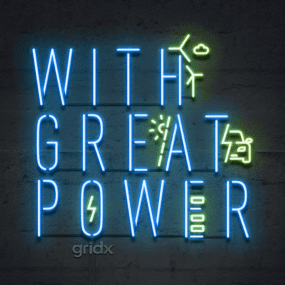Could utilities become the ‘FedEx of electricity’?
Holy Cross CEO, Bryan Hannegan, says a contentious net metering plan in Colorado is paving the way for a new utility business model.

In early 2023, things were moving along as planned for a rate restructuring plan at Holy Cross Energy, a rural electric co-op in Colorado. The board of directors had approved the plan, which would separate the cost of energy from the cost of delivering that energy to the customer.
The change meant rooftop solar customers could continue to sell their excess electricity back to Holy Cross, just at a much lower rate that would slow their return on investment.
The pushback from solar customers and the solar industry was swift. In an op-ed in The Aspen Times, Mike Kruger, head of the Colorado Solar and Storage Association, called the plan a wet blanket that would stifle the growth of rooftop solar.
And the solar industry told the state’s energy office and Colorado Gov. Jared Polis that the restructuring would also violate Colorado’s net metering law. Not long after, Holy Cross CEO Bryan Hannegan got a call from the governor, asking for a meeting with Holy Cross and solar industry representatives.
Speaking on the With Great Power podcast, Hannegan joked that it felt a bit like “being called to the principal’s office” for fighting in the hallway. But the result — an ongoing series of meetings with energy industry stakeholders from across the state — brought positive change.
“It’s going to be a wonderfully open and transparent process, resulting in hopefully some approach on how to take the future of net metering forward,” he said.
In May, the Holy Cross board voted to pause the plan, and later rescinded it altogether. But Hannegan said this is just the beginning of a long-term reckoning for utilities that have a growing share of generation coming from customers. For Holy Cross, rooftop solar makes up almost 10% of the utility’s total capacity needs, and several hundred systems are being added annually, he said.
“At some point, we’re going to hit a breaking point where all that solar during the day is creating costs that really ought to be borne by those that are providing it as well as by us in a more collaborative sort of way,” he said. In addition, he said investment in solar with storage will help the utility address the imbalance of supply that happens when Holy Cross customers generate excess power mid-day when it’s not generally needed.
One of the demand response programs Holy Cross has deployed provides zero-interest financing for customers who install Tesla Powerwalls or similar home battery systems. The customer pays for the storage over time, as a separate line item on their Holy Cross bill. “You’re basically leasing to own batteries for your home,” Hannegan explained.
These and other programs — including a pilot program in a Basalt, Colorado housing development that uses meter-level orchestration software to manage DERs — are helping Holy Cross gain the type of control over local resources that “grid orchestration systems provide at the transmission level with the ISO and the RTOs or the balancing authorities as a whole,” he said.
Utilities across the country are working through similar growing pains with solar. Virtual power plants could help. Even a utility like Duke Energy is testing a program that incentivizes customers in North Carolina to install rooftop solar plus batteries as part of a virtual power plant pilot. Technology vendors are also hoping to provide new models that can address changes to net metering for residential users, including power purchase agreements.
In Colorado, the rift that formed over the Holy Cross rate restructuring plan will take time and community engagement to repair. But ultimately, the utility business model needs to change, Hannegan says. Rather than selling electricity, he envisions utilities becoming infrastructure operators, essentially becoming “the FedEx of electricity in the sense that wherever it comes from, wherever it needs to go, we’ll get it there on time and at an affordable price and in a reliable manner,” he said.
In the first episode of season 3 of With Great Power, host Brad Langley talked with Bryan Hannegan about Holy Cross Energy’s rate restructuring plan and his vision for a new utility business model.
Listen here or wherever you get your podcasts.
Read the original article from Latitude Media here





